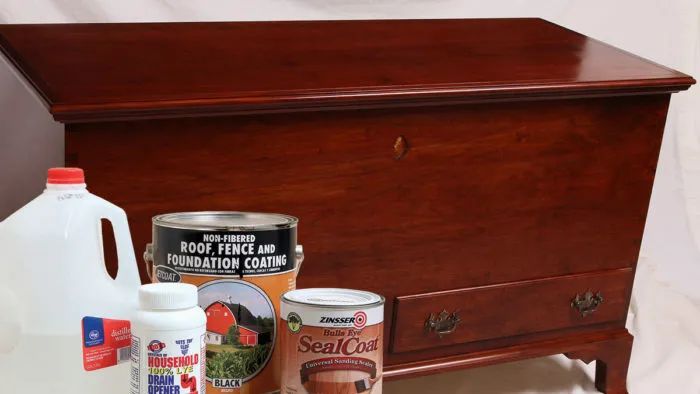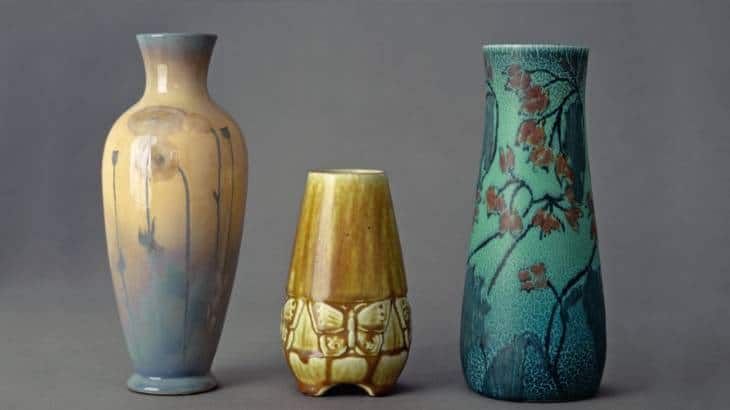Is Cherry Stain Red?
What is Cherry Stain Wood?
Cherry wood is a popular hardwood prized for its reddish-brown color and smooth, even grain pattern. It comes from cherry trees, most commonly the black cherry (Prunus serotina), native to eastern North America. Cherry wood has a fairly straight grain and medium texture, with small pores that give it a semiporous to closed-grain structure.
Some key properties and uses of cherry wood include:
- Density – Moderately dense and heavy.
- Hardness – Slightly soft compared to other hardwoods like oak or maple.
- Strength – Strong and durable; excellent shock resistance.
- Workability – Easy to work with hand or machine tools; good finishing results.
- Appearance – Rich reddish-brown heartwood; light sapwood; subtle grain patterns.
- Uses – Cabinetry, furniture, flooring, architectural millwork, musical instruments.
Cherry’s beautiful coloration, workability, and strength make it a go-to choice for high-end furniture, cabinets, trim, and other wood projects where both beauty and durability are desired.
Cherry Wood Color Range
Cherry wood is known for its reddish-brown color range, but the natural color can vary from rich reddish browns to pale pink hues. When the wood is freshly cut, it has a lighter pale pink appearance. According to Vermont Woods Studios (https://vermontwoodsstudios.com/pages/cherry-wood), the natural color of the wood darkens over time to a richer reddish-brown within 3 to 6 months of being cut down. After a full year, the wood reaches its mature reddish brown color.
Over time, cherry wood continues to deepen in color. According to Ty Fine Furniture (https://www.tyfinefurniture.com/blogs/blog/what-is-cherry-wood), natural cherry wood can age to a deep reddish-brown over many years. However, various factors like sunlight exposure can impact how quickly and deeply the natural color changes. The natural color range can vary based on the age and growing conditions of the tree as well.
How Does Cherry Wood Develop its Color?
Cherry wood develops its signature reddish tones through natural aging and oxidation processes. When the wood is first cut, it has a light pinkish hue. Over time when exposed to light and air, the wood undergoes chemical changes that alter the color pigments. Oxidation causes the wood to take on a richer, deeper reddish brown color that darkens over several months to years. This natural aging process is similar to how copper weathers over time.
Specifically, exposure to UV light and oxygen breaks down the lighter pinkish lignin in the wood, allowing the darker reddish-brown pigments to emerge and become dominant. The wood’s reddish tones come from water-soluble extractives such as anthocyanins. As these cherry extractives are exposed to light and air, they oxidize and polymerize, increasing their water insolubility and causing the wood’s color to intensify and stabilize. This color change happens faster in areas exposed to more light.
So in summary, the natural aging and oxidation that occurs when cherry wood is exposed to light and air over time is what causes it to transition from a lighter pinkish tone to the deeper, richer red-brown color that cherry wood is known for[1].
[1] https://vermontwoodsstudios.com/pages/cherry-wood
Does All Cherry Wood Stain Red?
Cherry wood is known for its reddish-brown color, but not all cherry wood will stain a vivid red. There are several factors that affect how red the stained wood will look:
Age of the Wood – New cherry wood has a lighter pink tone that darkens over time with exposure to light. Older cherry will more readily achieve a deep red stain.
Grain Pattern – Cherry wood grain can vary from straight to wild. Boards with more wild grain will absorb stain unevenly and show less uniform color.
Stain Used – The type of stain makes a difference. Gel stains accentuate grain while penetrating stains distribute color evenly. Reddish stain shades like cherry or mahogany will help bring out the natural red undertones.
Finish Applied – Water-based finishes create a lighter stain color than oil-based. Multiple coats of finish will also deepen and enrich the stained color.
Sanding and Preparation – Proper sanding to ensure an even, smooth surface helps the stain absorb uniformly. Conditioning the wood first can regulate absorption.
In most cases, cherry can be stained to achieve a distinctly red tone. But the shade ranges from light pink to deep burgundy based on preparation, type of stain, number of coats, and the natural variability of cherry wood.
Cherry Stain Color Options
Cherry wood is prized for its rich reddish-brown color. However, it can be stained in a variety of shades depending on the desired look. Here are some of the most popular cherry stain color options:
Red Cherry Stain: This is the classic, traditional cherry stain color, ranging from light red to deep mahogany. When stained, the natural red undertones of the wood are enhanced and brought out. Many prefer a mid-tone red, but lighter and darker reds are also popular. See page 24 of the 2020 Marsh Visual Display Board Products catalog (https://tannernj.com/wp-content/uploads/2020/03/Marsh-Catalog-2020-compressed.pdf) for some examples of red cherry stains.
Brown Cherry Stains: For a more subtle look, cherry can be stained in different shades of brown, from a rich walnut to a warm honey brown. These brown cherry stains allow the natural grain to show through while muting the red undertones.
Neutral and Gray Cherry Stains: For a more modern, weathered appearance, gray and driftwood type stains look beautiful on cherry. These neutral tones contrast nicely with the natural reddish highlights.
Dark Cherry Stains: For a dramatic, elegant look, cherry can be stained very dark – an “ebony” or black cherry stain. This makes the woodgrain really stand out. See the Marsh catalog, page 24 again for some dark cherry stain options.
As you can see, cherry wood offers a diverse palette for stain colors. It takes stain very well and allows for lots of creative options beyond just a typical red stain.
Achieving a Red Cherry Stain
Cherry wood is prized for its rich, red tones. However, achieving a deep, vibrant red stain on cherry wood requires careful preparation and technique.

According to wood finishing experts, there are a few key steps to follow for staining cherry wood red:
- Allow the wood to air dry thoroughly before staining. Cherry needs to be as dry as possible to absorb stain evenly.
- Sand the wood with progressively finer grit sandpaper up to at least 220 grit. This helps open up the pores for maximum stain absorption.
- Use a wood conditioner or pre-stain treatment. These products help regulating absorption to prevent blotchiness.
- Select an oil-based wiping stain, which penetrates deeper into the wood compared to surface stains. Aim for a “cherry red” or “dark mahogany” colored stain.
- Apply the stain in thin, even coats, wiping away excess. Multiple thin coats builds up richness and depth of color.
- Consider adding a red dye stain, such as Basic Coatings’ Padco Red dye, to intensify the red tones. Mix with oil-based stain.
- Finish with a clear protective topcoat, such as polyurethane. This locks in the stain color.
With proper preparation and technique, you can achieve a deep, vibrant red stained finish on cherry wood furniture, flooring, cabinets, and other projects.
Alternative Cherry Stain Colors
While a rich, warm red is the most iconic cherry stain, there are many other stain colors that can complement cherry’s natural beauty. Here is an overview of some popular alternative stain colors for cherry wood:
Chestnut and coffee tones like Chestnut Stain (FC-104) bring out the depth of cherry wood while avoiding a true red. These rich brown hues give a traditional feel.
For a lighter, more rustic look, stains like Baywood and maple bring out golden undertones in cherry. These can give a casual, countryside vibe.
Darker espresso tones like chocolate and coffee bean stains lend a sophisticated, contemporary accent to cherry wood. These darker browns pair beautifully with the reddish hints of cherry.
Painted or whitewashed finishes are also popular alternatives to red cherry stain. The light colors contrast beautifully with the cherry grain.
Gray stains are an on-trend option as well. The cool tones of gray balance out warm cherry wood beautifully. A gray wash or whitewash on top of a cherry stain is also an attractive pairing.
With the right preparation and technique, cherry wood can take on a wide spectrum of stain colors beyond classic red. The wood’s rich grain pairs well with both light and dark hues.
Protecting and Maintaining Cherry Wood
Cherry wood is a beautiful hardwood that can last for generations if properly cared for. To protect cherry wood and maintain the vibrancy of a cherry stain, it’s important to follow a regular cleaning and maintenance routine.
Dusting frequently with a dry, soft cloth is the best way to protect cherry wood furniture from buildup and dirt that can wear down the finish over time. Be sure to dust undersides and crevices too. Every few months, thoroughly clean the wood with a soft cloth lightly dampened with a wood cleaner or mild soap and water solution. Avoid abrasive cleaners or excessive moisture that could damage the finish. Immediately dry any excess liquid with a clean cloth (Source).
In addition to regular dusting and cleaning, adding a protective wax layer 1-2 times per year will help nourish the wood and maintain the cherry stain’s richness. Use a high quality furniture wax or polish that is specially formulated for cherry wood. Apply a thin, even coat with a soft cloth following the product directions. Buff gently once dry.
Avoid placing cherry wood furniture in direct sunlight or near heating vents to prevent fading, drying out, or cracking over time. Use furniture coasters under glasses and regularly check for any water ring marks. Keep humidity moderate in the room to prevent the wood from becoming too dry.
With proper care, the beautiful cherry stain and wood grain patterns will remain vibrant for many years to come. Gentle and frequent cleaning keeps it looking its best.
When to Stain vs. Leaving Natural
Cherry wood has a beautiful reddish-brown natural color that darkens and enriches over time when exposed to light. Many people prefer to leave cherry wood natural to showcase this rich color. However, staining cherry can provide some advantages:
Reasons to stain cherry wood:
- Achieve a specific, consistent color – staining provides more control over the final color compared to natural aging
- Minimize natural color variations – staining can create a more uniform appearance
- Protect the wood from UV damage – stains contain pigments that help protect against sun exposure
- Hide scratches and imperfections – staining can help disguise surface defects
Reasons to leave cherry wood natural:
- Show off the wood’s natural beauty – the reddish-brown color and grain patterns are highly desirable
- Allow the color to enrich over time – natural cherry wood develops a deeper, warmer tone when exposed to light
- Avoid maintenance and re-staining – natural cherry doesn’t need frequent refinishing
- Prevent discoloration – stains can occasionally turn pinkish or blotchy on cherry over time
Generally, cherry wood is often left natural for furniture, cabinetry, and flooring to display its inherent beauty. But staining can be preferable for projects where consistent, specific coloring is desired. Test samples help decide between stained or natural cherry.
Cherry Wood Stain Tips
When working with cherry wood, proper preparation is key for achieving an even and consistent stain. Experts recommend sanding the wood with progressively finer grit sandpaper, up to at least 220 grit, to ensure the wood is smooth before staining (1). This helps the stain penetrate evenly into the wood. It’s also advised to apply a wood conditioner or pretreatment first, which regulates absorption to prevent blotchiness and uneven coloring (2).
When selecting a cherry stain, opt for a gel stain rather than a liquid stain. Gels sit on top of the wood rather than absorbing in quickly, allowing more control over color consistency (1). Apply the stain in the direction of the wood grain using a high-quality natural bristle brush. Make long and continuous strokes to maintain an even coat. Allow ample drying time between coats as advised on the product instructions.
After staining, protect the wood with a clear finish like polyurethane. Water-based polyurethanes are excellent options as they allow the wood to breathe while providing protection from scratches and spills. Apply at least 3 coats following the direction of the wood grain, lightly sanding with 220 grit sandpaper between coats. This seals the stain and provides a smooth, durable finish.




